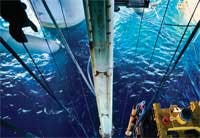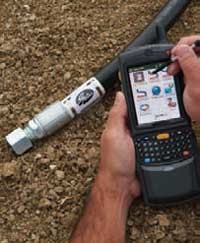No matter the application, hose failure can be both costly and dangerous, leading to unscheduled downtime, environmental complications, and even personal injury. To help prevent some of these potential catastrophes, several companies have developed technology to help predict the life span of a hydraulic hose for any given application.
Too often personnel choose to go beyond the rated life of a hose, which they may believe to be conservative. As a result they might not replace the hose until it is too late. It is critical that replacement occur before it fails, during normally scheduled maintenance.
Gates Corp., Denver; Eaton Corp.’s Hydraulics Group, Eden Prairie, Minn.; and Ryco Hydraulics Pty. Ltd., Footscray, Australia; agree on why such technology was necessary so they all set out independently with a common goal — to anticipate hose failure — yet produced three different results.
Algorithm gives hose a high IQ
Sentry Services, which was developed by Gates, includes two components, Sentry ID and Sentry IQ. Together they offer solutions to a wide range of applications both critical and otherwise.
Sentry ID tags and tracks hose assemblies, which according to Gates allows users to build a history and a means to plan for the future. Through this program, users have access in the field to hose assembly data. Applications of a less critical nature may find this service useful.
LifeSense is included within the body of the hose, using sensing technology and electronic monitoring to gauge hose materials and whether or not they are still healthy, says Doug Jahnke, Eaton’s product marketing manager.
Currently, this technology is available for use with factory-made assemblies with straight JIC swivel fittings in 1/2-, 3/4-, and 1-in. sizes of two-wire braid hose.
“The system includes a new hose incorporating at least one conductor in its construction, a special end fitting that serves as both a hydraulic and an electrical connector, and a diagnostic unit containing the monitoring electronics and operator notification interface,” says Jahnke.
According to lab results comparing the use of LifeSense and a traditional estimation of hose life, Eaton’s research supports that use of this technology will provide “a 50+% extension of useful life.”
Technological updates reduce cost, maintenance inspections
When it comes to cost reduction, Eaton believes that this technology will offer results for every application. “The greatest initial opportunities will be found in offshore equipment, industrial machinery, and renewable energy equipment, where the cost of both downtime and clean up is extremely high,” says Jahnke.
Although all of the technologies mentioned above can provide comprehensive details regarding a particular hydraulic hose and its environment they do not eliminate the need for visual inspections, in the opinions of Gates and Ryco.
As Gates’s puts it, their technology looks at the hose from the “inside out. It doesn’t replace physical inspection and we recognize that a lot of failures occur due to external factors,” Shockley says.
Eaton, on the other hand, believes that their technology “will largely eliminate the need for the visual inspection of hoses.”
While each company produced very different products, all three technologies offer unique solutions to an ever-present problem.
Web exclusive: Video on Eaton's LifeSense hose


